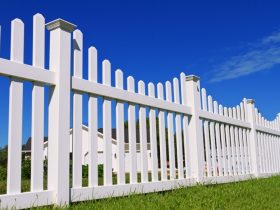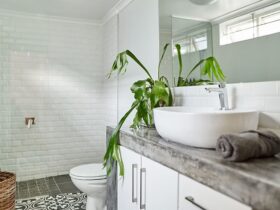They may not get as much thought as paint color and home decor, but the flooring in your home is just as important. Your floors are essential to the style and function of your home. So, the right flooring is an imperative choice.
One factor you must consider with the types of home floors is the material. When renovating, you’ll have a couple of options of flooring materials. Each one has benefits and drawbacks.
Some materials are better for certain homes and lifestyles, so it’s important to understand the differences between flooring materials. Here is a quick guide to the most common types of flooring.
Hardwood
One of the most popular styles for residential floors is hardwood. This classic style is elegant, timeless, and can work in practically every home. There are two types of hardwood you can expect to find.
Solid hardwood boards are made from a single piece of wood. Engineered hardwood has a layered base made of compressed wood, polymers, and resin then has real hardwood on top.
Older hardwoods may require some maintenance to upkeep their appearance. But modern hardwoods are often waterproof, scratch-resistant, and dent-resistant. Choosing hardwood for new floors is a stylish and durable option.
Laminate
Want the look of real wood at a more affordable price? That’s where laminate floors come in.
Laminate can mimic the look of real wood but requires less maintenance than hardwood floors. The planks can have graining that looks like pine, oak, maple, and other woods and come in a variety of stain colors.
Installation is simple thanks to the interlocking tongue-and-groove planks, which makes a home renovation project easy.
Laminate is also very durable; it’s waterproof and scratch-resistant, great options for busy families or those with active lifestyles.
Vinyl
Made from acrylic, PVC, and other polymers, vinyl flooring is ideal for the smart homeowner looking for something inexpensive and durable.
Vinyl flooring can often mimic the look of hardwood and tile at a much lower price point. And because vinyl can be installed over most existing floorings, there is no demolition required to install.
The material is waterproof, stain-resistant, and scratch-resistant, making it ideal for kitchens and bathrooms. If you have kids, pets, or a home with high traffic, consider a vinyl thickness between 30 to 40 millimeters.
Tile and Stone
Tile is one of the best flooring options for areas in the home where there is a lot of moisture. Because of the durability and moisture-resistant properties, bathrooms, kitchens, and laundry rooms often feature tile.
You can find tile in colorful shades and unique shapes that add a little bit of design to a room. Or you can choose one that mimics the look of wood or natural stone.
Ceramic and porcelain are two of the most common types of tile, and both are durable options. You can also find stone tiles like marble and slate that may require more maintenance and upkeep.
Finding The Right Types of Home Floors
Flooring for your home may not be on your list of most important decisions. Focusing on paint color, decor, and room layout is fine. But that doesn’t mean you should neglect thinking about flooring.
The floors can contribute to the style of your interior. Keeping durability in mind is also essential, especially if you have a family or an active lifestyle. Finding the right types of home floors will give every room a solid base to build on.
Looking for more home and decor advice? Check out more articles on our site every day!








